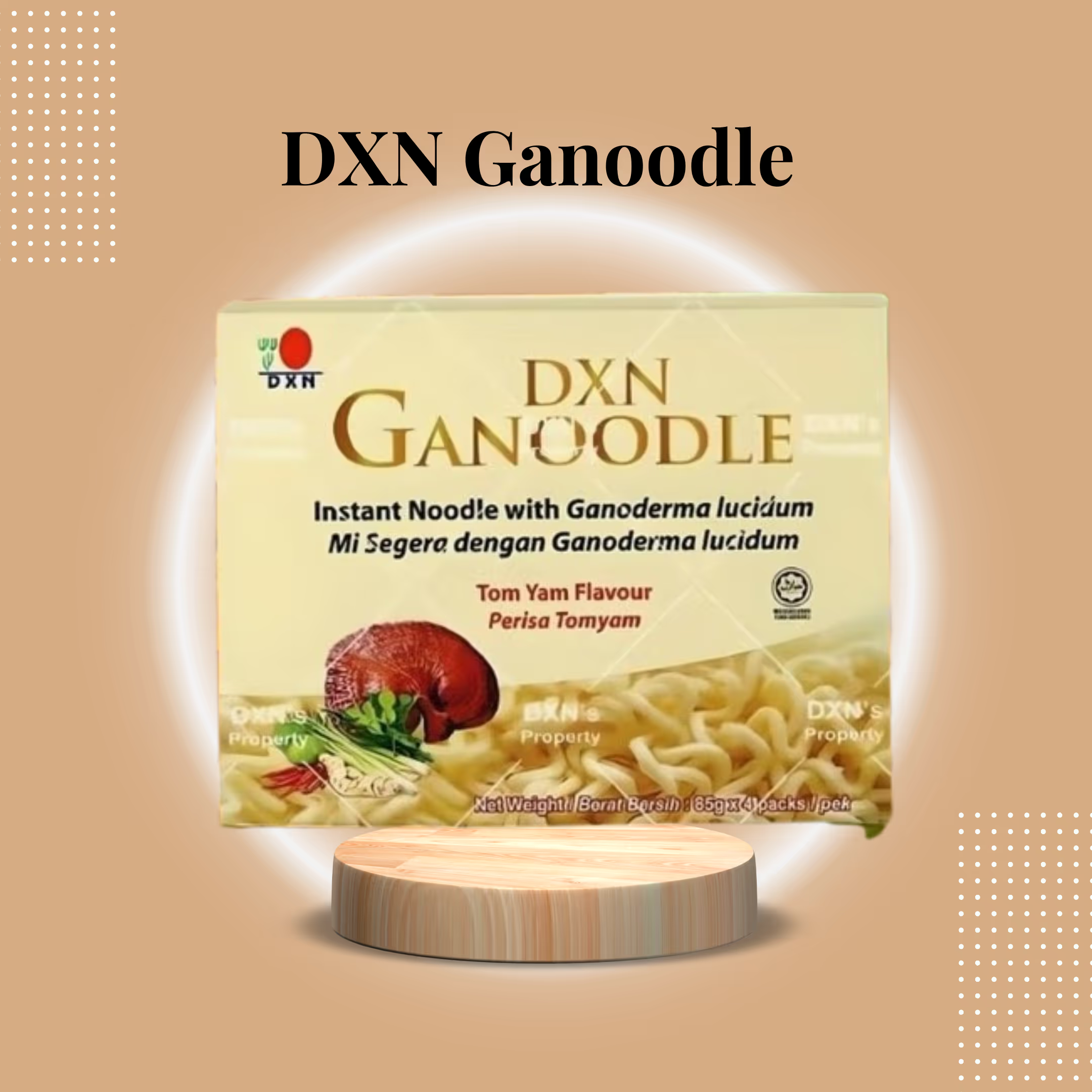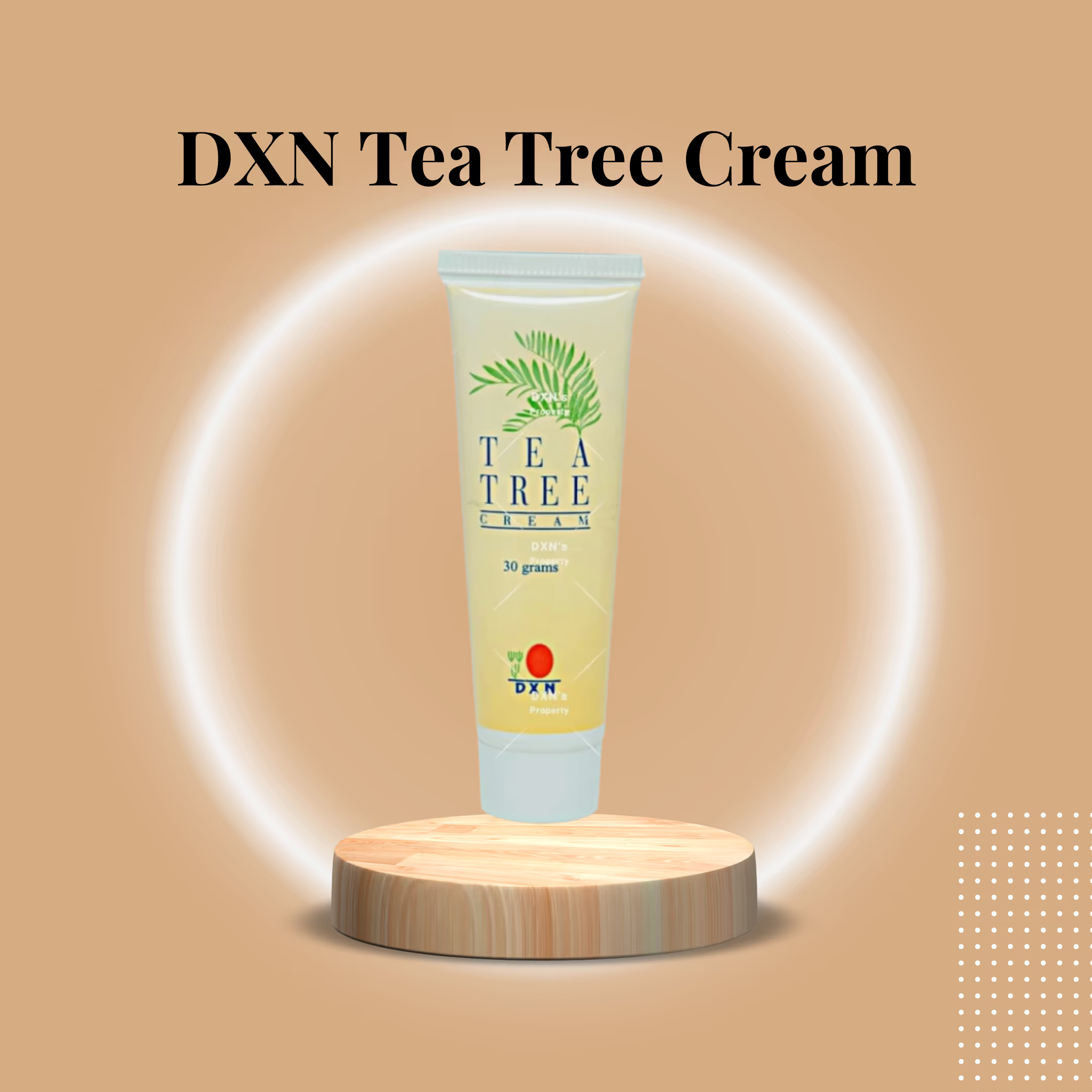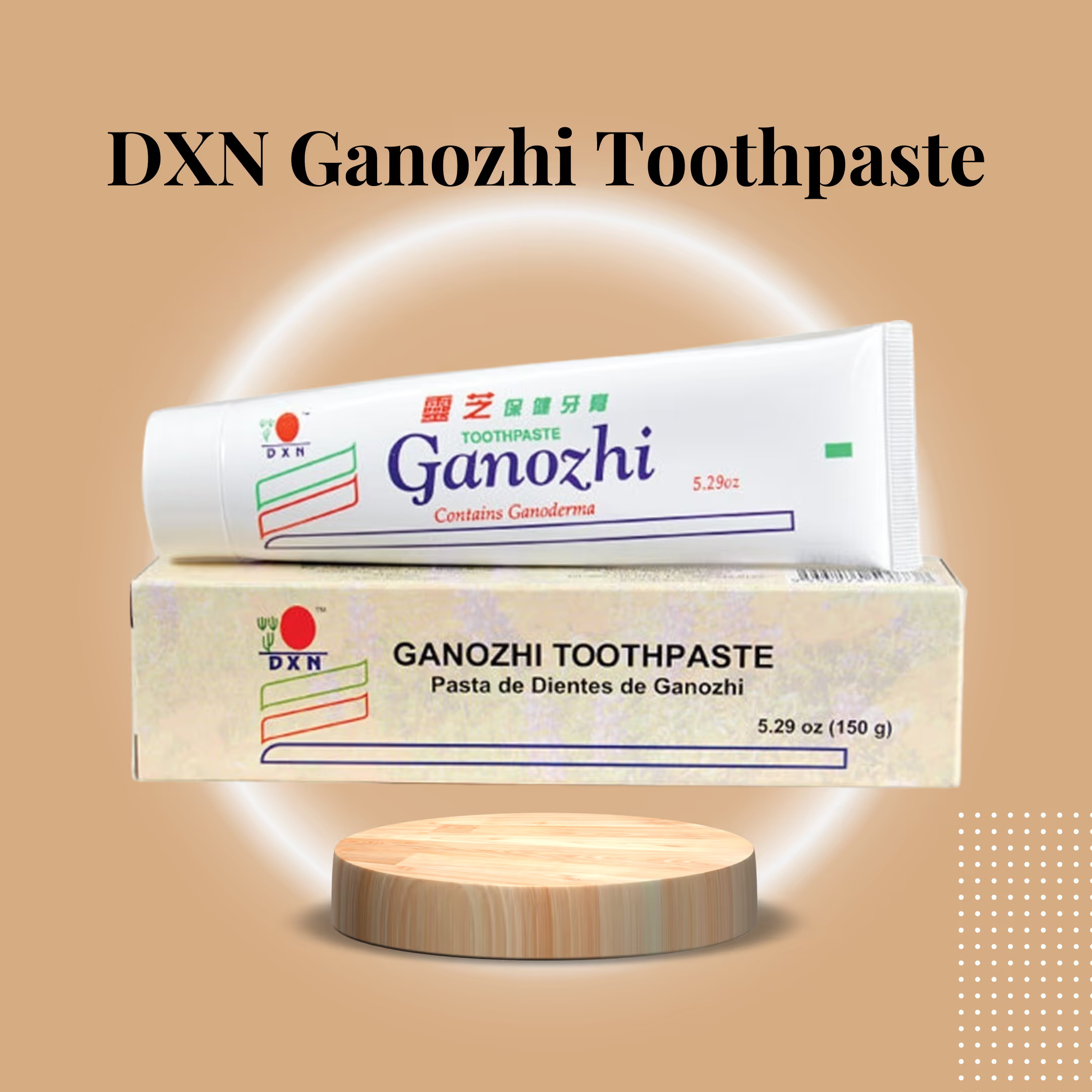1. What is DXN Ganoodle — the concept and composition
DXN Ganoodle is an instant noodle product positioned as a functional food. It maintains instant noodle convenience—short cook time, simple instructions, familiar texture—but redefines that convenience with enhanced benefits.
Key defining features:
- Ganoderma enrichment: The defining functional ingredient is Ganoderma lucidum extract (Reishi/Lingzhi). This brings polysaccharides, triterpenes, and fiber into the noodle matrix.
- Non-fried, oil-free drying: Instead of flash-frying the noodle blocks, Ganoodle is dried using an oil-free process, which dramatically reduces added fats and the oxidized oil compounds often found in fried instant noodles.
- Clean label: No artificial coloring, no artificial flavors, no preservatives, and no added MSG. The emphasis is on natural flavor and transparent ingredients.
- Consumer-ready flavors: Offered in accessible, popular flavors (such as Tom Yam), making the product both familiar and approachable.
The result: an instant noodle that functions as a staple, not just a snack—providing carbohydrates for energy, fiber for digestion, and Ganoderma compounds for immune and stress resilience.
2. Why the production method matters: non-fried vs. fried noodles
Most instant noodles on the shelf are deep-fried during the manufacturing process. Frying removes moisture quickly and produces the classic crisp block, but it comes with nutritional costs:
- Higher total and saturated fats (from the frying oil).
- Oxidized lipids and degraded nutrients are created by high-temperature frying.
- An often oilier mouthfeel and residual flavor that can mask subtle, natural seasonings.
Ganoodle’s oil-free drying does two important things:
- Without frying, the final product contains only inherent fats from the wheat flour and any deliberate recipe fats, much less than a deep-fried block.
- Preserves a cleaner flavor. There’s no leftover frying oil taste, which lets natural seasonings and the mushroom’s nuanced notes come through.
Air-drying or dehydration requires careful processing to ensure optimal shelf life and rehydration. DXN’s method preserves a springy texture and a cleaner nutritional profile.
3. Ganoderma lucidum — what it is and why it’s used
A short primer
Ganoderma lucidum (Reishi/Lingzhi) is a medicinal mushroom that has been used in Asia for centuries. Traditional uses range from promoting longevity to supporting the immune system and calming the nervous system. Modern nutrition and pharmacology research highlights several bioactive groups in Ganoderma:
- Polysaccharides, especially beta-glucans (specialized fibers), are believed to help regulate and support the immune system.
- Triterpenoids, a group of plant compounds, are thought to have adaptogenic (stress-moderating) and anti-inflammatory effects.
- Dietary fiber — contributes to gut health and satiety.
How these components may help
- Immune modulation: Beta-glucans interact with immune cells, such as macrophages (cells that remove harmful substances) and natural killer cells (cells that target infected or unnatural cells), in ways that help the immune system respond in a balanced way. This means Ganoderma is considered immunomodulatory—helping balance rather than simply increase immune activity.
- Adaptogenic actions: Triterpenoids and other molecules can help the body adjust to physical and environmental stress. This support may manifest as improved stamina and a greater sense of resilience under stress.
- Digestive and metabolic support: The fiber from Ganoderma helps maintain regular bowel movements and serves as prebiotic food (nourishment for beneficial bacteria) for a healthy gut.
Practical framing
Ganoderma isn’t a stimulant like caffeine; its benefits are subtle and cumulative. People tend to notice gentle improvements in energy stability, digestion, and resilience when it’s used regularly — especially when combined with better daily nutrition and sleep.
4. Nutrition snapshot — what Ganoodle contributes to a meal
While recipes differ and nutritional labels are the definitive source, here are the practical nutritional improvements Ganoodle aims to make over classic fried instant noodles:
- Lower fat content: Because the noodle block is not fried, total fats — particularly saturated fats — are reduced.
- Added functional compounds: Ganoderma extracts contain polysaccharides, triterpenoids, and appreciable dietary fiber.
- Better satiety: The combination of complex carbs (from wheat) and fiber, plus any added protein you serve with the noodles, gives a more sustained energy release.
- No MSG, artificial colors, flavors, or preservatives — ideal for those who prefer minimalist ingredients.
Ganoodle provides a solid base—just add lean protein and vegetables for a balanced meal.
5. The science-backed benefits (responsibly stated)
Below are the primary benefits associated with Ganoodle, grounded in the properties of its ingredients and the reasonable expectations that can be achieved through dietary change.
Immune balance and resilience
Ganoderma’s polysaccharides (e.g., beta-glucans) have been studied for their role in modulating immune activity. In simple terms, these compounds help the immune system respond appropriately to threats and maintain homeostasis, which can result in a general sense of improved resilience during busy or stressful periods.
Stress handling and energy stability
Triterpenes and other adaptogenic components may help mitigate the physiological impact of stressors on the body’s systems, leading to improved perceived stamina and mental clarity over time. People often report less mental fatigue when adaptogens are part of a consistent routine.
Digestive health and microbiome support
The mushroom’s fiber acts as a prebiotic, providing food for beneficial gut bacteria. Over time, a healthier microbiome—meaning the community of microorganisms in your gut—can lead to improved digestion, better nutrient absorption, and even affect mood and immune function.
Lower unhealthy fat intake
Switching to Ganoodle significantly reduces dietary intake of oxidized and saturated fats, which is helpful for heart-health-conscious eaters.
Practical caution
While Ganoderma contains bioactive compounds with promising evidence, it is not a cure-all. Most clinical evidence is supportive, but not definitive, across all claimed benefits. Ganoodle is best used as part of an overall healthy pattern — not as a sole therapeutic intervention.
6. How to prepare Ganoodle for maximum benefit (practical kitchen guide)
A good bowl depends on both technique and extras. Here’s a quick plan (5–10 minutes) to turn Ganoodle into a full meal.
Basic cook (5–7 minutes)
- Bring water to a rapid boil.
- Add the Ganoodle block and cook according to the package instructions, avoiding overcooking to preserve its springiness.
- Drain or keep some broth, depending on desired texture.
- Stir in the natural seasoning packet (if included).
Make it a balanced meal (additions)
- Protein: Add a soft-boiled egg, shredded grilled chicken, pan-seared tofu, or prawns for 8–15 g of additional protein.
- Veggies: Quickly wilt spinach, add steamed broccoli, or toss in grated carrots, bean sprouts, and sliced bell peppers for vitamins, fiber, and volume.
- Healthy fats: Finish with a small drizzle of sesame oil or a spoonful of crushed nuts/peanut butter for satiety and flavor complexity.
- Acidity & herbs: A squeeze of lime, sliced scallions, cilantro, and a splash of low-sodium soy or tamari brighten the bowl, reducing the need for extra salt.
Two quick recipes
Protein-packed Tom Yam-style Ganoodle
- Cook Ganoodle; reserve 1/2 cup of broth.
- In a small pan, sauté garlic and sliced shallot. Add the reserved broth and a teaspoon of Tom Yam paste. Add the cooked noodles and toss with the pre-cooked shrimp and a handful of spinach. Finish with lime and cilantro.
Vegetable & Tofu Stir-Through
- Cook the Ganoodle and drain.
- Stir-fry cubed pressed tofu with soy, ginger, and a splash of rice vinegar. Toss noodles and vegetables together, finish with sesame seeds.
7. Meal-planning and habit tips — integrate Ganoodle into a healthy routine
- Rotate with other staples: Use Ganoodle as one part of a pantry that includes whole grains, legumes, canned beans, and other fortified noodles (e.g., Spirudle) to vary nutrient intake.
- Batch prep: Cook noodles in bulk and portion into jars with veggies and proteins for grab-and-go lunches. Keep sauces separate to avoid sogginess.
- Pair with a daily ritual: Combine your Ganoodle bowl with a morning or evening habit (stretching, journaling) to build a routine that supports both nutrition and wellbeing.
- Watch sodium: Even with a cleaner label, the seasoning packet may contain sodium. Use low-sodium broths and fresh herbs to enhance flavor without excess salt.
8. Who benefits most from DXN Ganoodle?
Understanding who will benefit most from Ganoodle also helps clarify its role in a balanced diet and diverse routines. The convenience plus meaningful nutrition:
- Busy professionals who need fast, satiating meals that support focus and steady energy.
- Students juggling study and limited cooking time who want better nutrient density than typical instant options.
- Health-minded families seeking a quick meal base that can be easily fortified for both children and adults.
- Anyone transitioning away from processed snacks and craving a simple, functional staple that supports digestion and immune resilience.
It’s less aimed at athletes needing highly specific electrolyte replacement or clinical therapeutic doses of mushroom extracts — in those cases, targeted supplements or sports formulations may be preferable.
9. How Ganoodle compares with other instant noodle types
Fried instant noodles
- Pros: Instant texture, very fast.
- Cons: High in added fats, often oily flavor, and more degraded nutrients from frying.
Non-fried commodity noodles
- Pros: Lower fat, cleaner flavor.
- Cons: May lack functional fortification.
Ganoodle
- Pros: Non-fried, Ganoderma-enriched, clean label, higher fiber, and adaptogenic support.
- Cons: Functional benefits are supportive — not an immediate pharmacological fix — and it may carry a higher price than commodity noodles.
The choice depends on values: if you want quick and inexpensive, fried commodity noodles are the way to go. If you want convenience plus daily functional nutrition, Ganoodle offers a compelling tradeoff.
10. Quality, safety, and responsible use Ingredient traceability and manufacturing
Look for transparency: sourcing statements, manufacturing controls, and third-party testing help ensure the Ganoderma extract is safe and of consistent potency. DXN emphasizes quality control and clean-label manufacturing in its product messaging.
Interactions and precautions
- Medications: Individuals taking immunomodulatory medications, anticoagulants, or those with autoimmune conditions should consult a healthcare professional before adding daily Ganoderma-containing foods or supplements.
- Allergies: If you have known mushroom allergies, avoid Ganoodle.
- Pregnancy & breastfeeding: Consult a healthcare provider before use.
- Sodium considerations: Use moderation and supplement with fresh vegetables and reduced-sodium broths.
11. Pairing Ganoodle with the larger wellness regimen
Ganoodle is most effective as part of a broader pattern:
- Combine with protein-rich products (like Spirudle or lean meats) to support muscle repair.
- Pair with digestive supports (enzymatic concentrates or fermented foods) to enhance nutrient absorption.
- Use adaptogen rotation: Swap Ganoodle with other functional staples (e.g., Spirudle for protein-rich days) to achieve multiple nutrient profiles throughout the week.
This ecosystem approach makes functional foods sustainable, interesting, and nutritionally broader than relying on a single fortified item.
12. Sustainability and practicality
Non-fried production requires different energy and drying infrastructure than frying. While not inherently greener, the absence of industrial frying oils reduces dependency on palm or vegetable oils and their associated supply chains. From a consumer standpoint, the practical advantages are the health profile and culinary versatility — you can finish the dish with fresh produce and proteins, reducing reliance on ultra-processed sides.
13. Cooking tips and troubleshooting
- Too soft? Reduce cooking time and rinse briefly in cold water to halt the cooking process.
- Too bland? Add umami with a small dash of low-sodium soy sauce, miso paste, or a squeeze of citrus.
- Brothy vs. dry: If you want a stir-fry feel, drain well and toss with sauce; for a soup, keep more broth and add veggies that soften in the liquid.
14. Realistic expectations — what Ganoodle will and won’t do
Will do
- Provide a convenient, lower-fat, fiber-containing instant noodle option.
- Deliver regular, modest doses of Ganoderma-derived polysaccharides and triterpenoids.
- Serve as a convenient vehicle for adding protein and vegetables to create a nutritionally balanced meal.
Won’t do
- Replace a varied whole-food diet.
- Act as a rapid medical therapy for disease.
- Create overnight transformations in health; effects are gradual and cumulative.
.avif)





